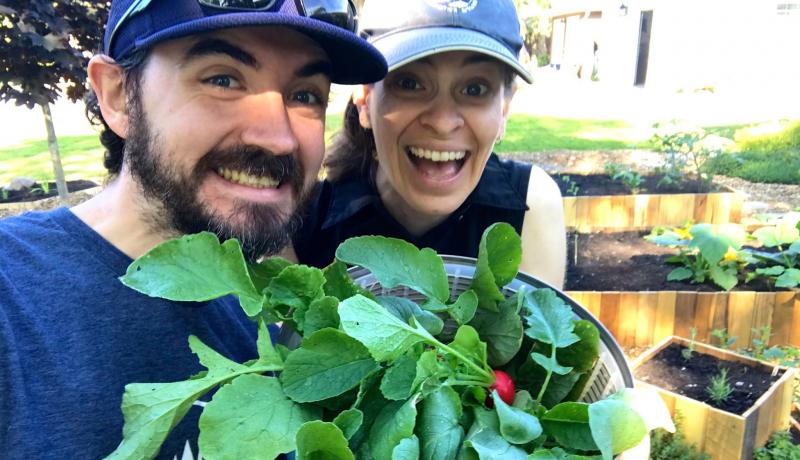
Soon after moving into their lovely new suburban home, Jess and Thomas set out to turn their traditional lawn into an exciting and productive ecological area. Armed with a modest budget and a large front yard, this young couple is well on their way to transforming their space and their neighbourhood with the help and guidance of Modern Locavore.
Phase 1 - Dreaming
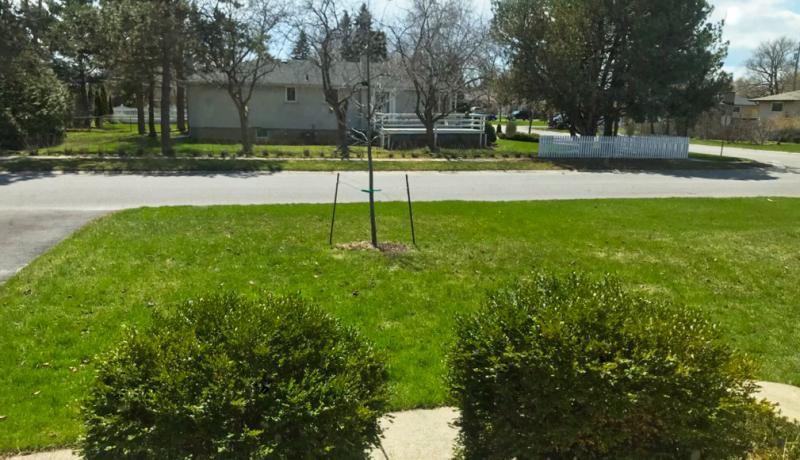
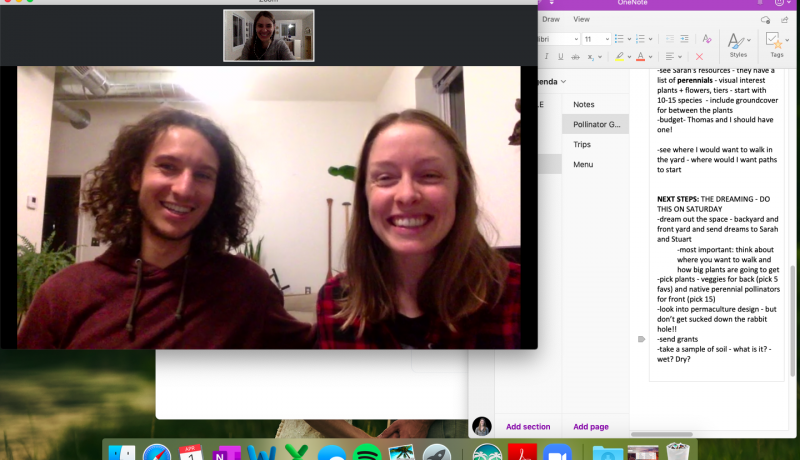
Jess and Thomas had a dream in mind: turn a typical grass lawn into an environmentally positive space. Jess has a particular passion for pollinators like bees and butterflies, and both Jess and Thomas wanted their space to provide for both wildlife and themselves while supporting their ecosystem. The key directive would be a pollinator garden intermingled with raised beds for growing fruits, vegetables, and herbs, but a number of requirements soon came to light:
- Water is at the top of their minds, so they knew their design would include both water collection and a strategy for making good use of water runoff.
- A compost bin was a must to ensure the success of their garden and to prevent waste from leaving their property.
- As a front yard in a lovely neighbourhood, aesthetics were an important component for both their own and their neighbours' sakes.
- The use of recycled materials is a top priority for both environmental and budgetary reasons.
In this time of physical distancing, we started with phone calls and internet meetings to get a handle on the project's requirements, come up with a plan, and lay out a design.
Phase 2 - Designing
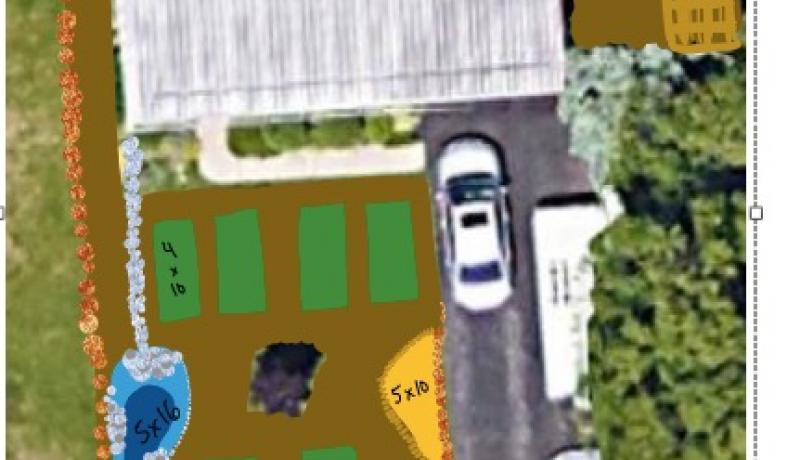
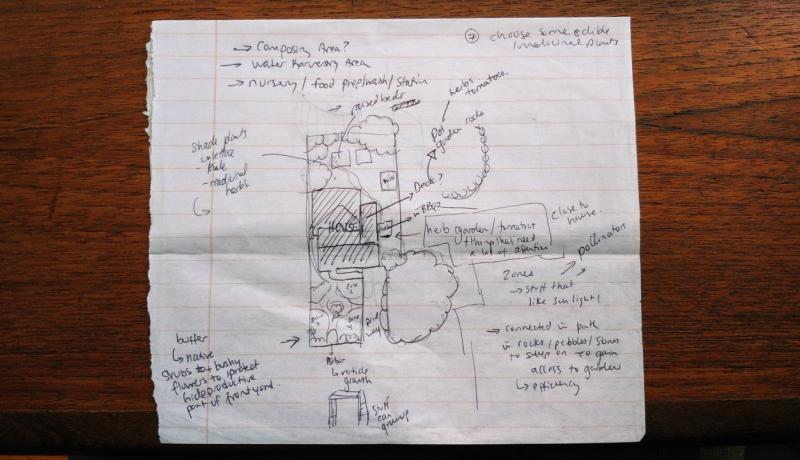
After many texts, emails, and calls, we progressively got closer to an ideal layout for Jess and Thomas' space. The use of satellite imagery from Google Maps and a good old fashioned tape measure were our tools of choice to draw up a rough plan of how the space would be laid out. We knew the design would be fluid to accommodate unforeseen hurdles and changes in tune as things progressed, but came up with an initial plan to work off of. The following factors would need to be accounted for:
- The orientation of their yard and house
- The shadows cast by trees in the path of the sun
- How water drains from the roof of the house, yard, and driveway
- The amount of space dedicated to producing food
Phase 3 - Planning
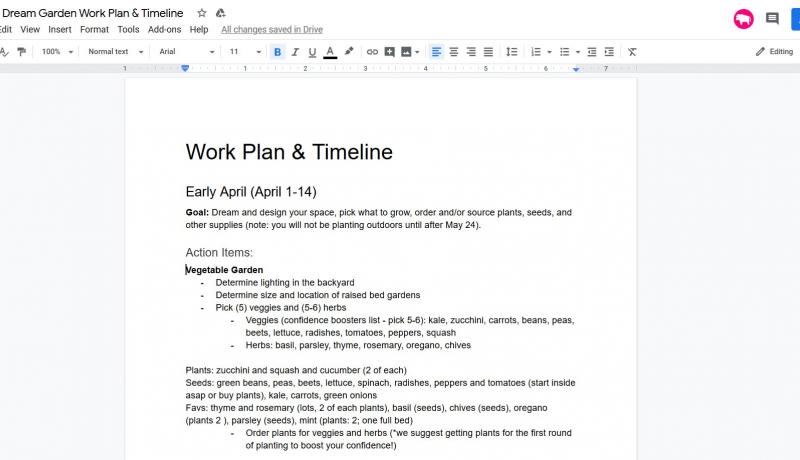
With a clear vision in mind, we set out to create a work plan, including the following details:
- What needs to be done, and in what order?
- Who is going to do each task?
- Where will materials be sourced from?
We knew one thing needed to come before all else: KILL THE GRASS!!!
Once that was addressed, a plan for the raised beds, sourcing of plants and materials, planting, and many more details was put in place.
Phase 4 - Sourcing Materials
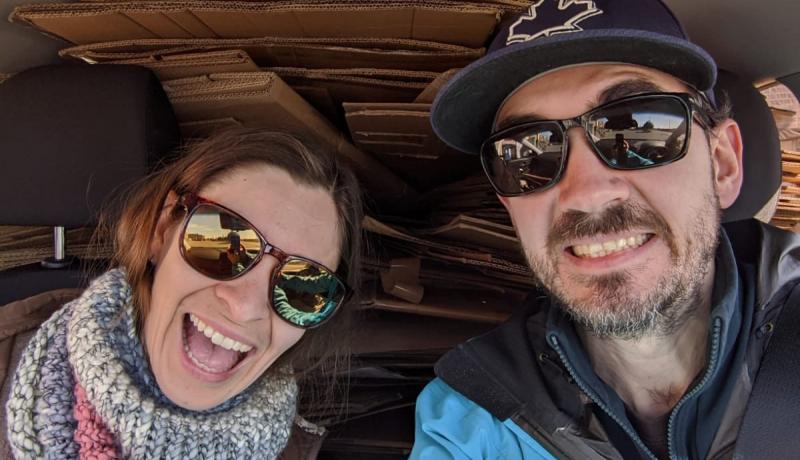
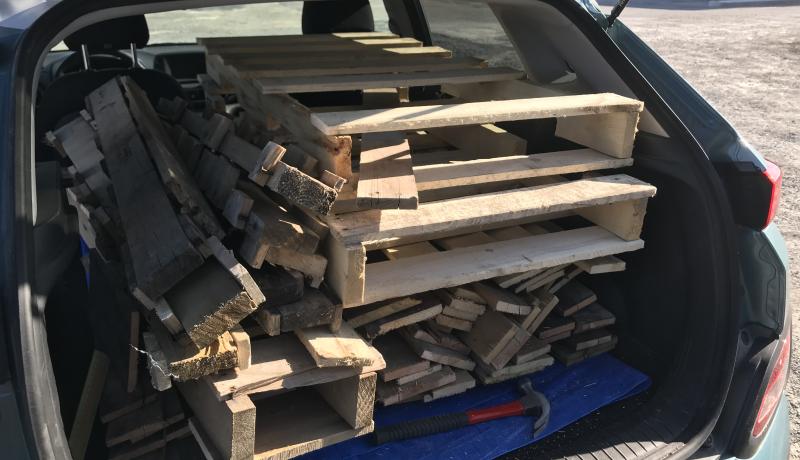
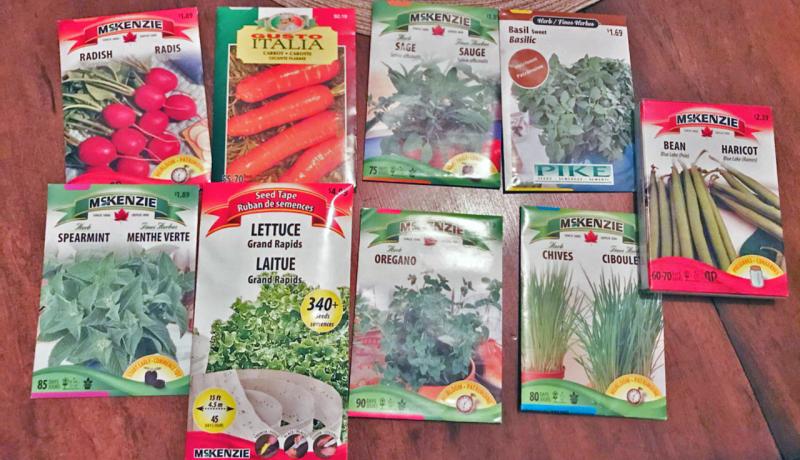
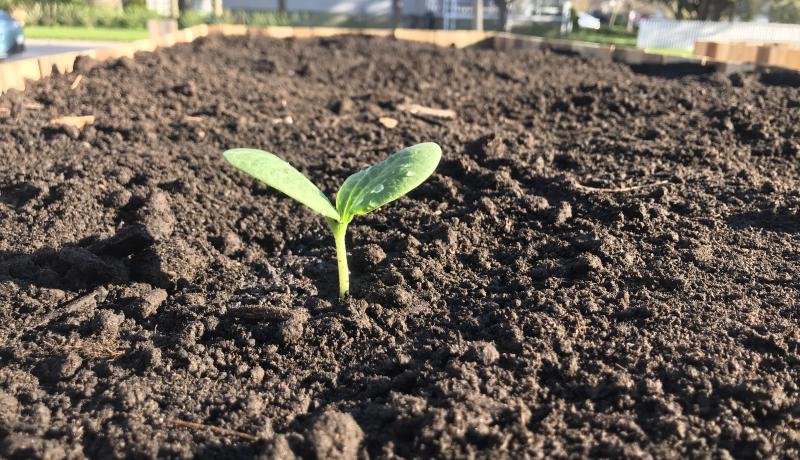
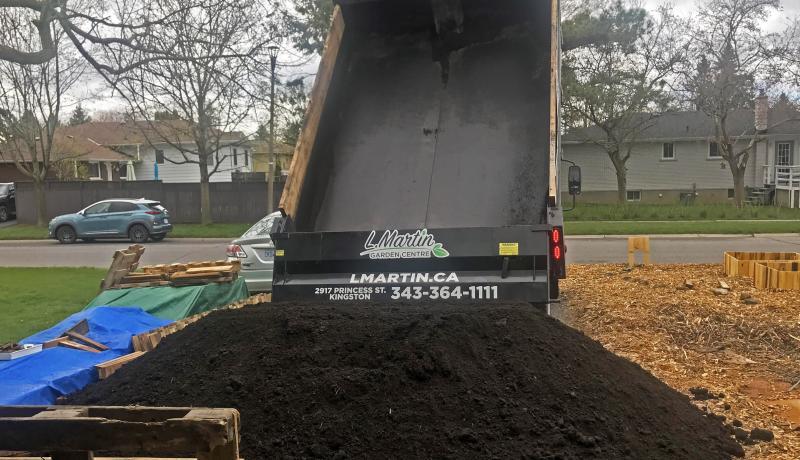
We soon found out that Jess and Thomas are masters of finding free recycled materials to use for their project. Within a matter of days, they had come across enough cardboard to cover their entire lawn. Kraft or contractor's paper could have been purchased, but to keep this project financially lean and environmentally friendly, discarded cardboard fit the bill perfectly.
Hardly a surprise to us by now, Jess and Thomas had a wonderful [top secret] source of free used pallets, and were able to get an arborist to drop off a load of wood chips for them free of charge. The latter is quite common as arborists typically have to pay a fee to dispose of their wood chip scraps.
To their delight, Jess and Thomas found a hidden stash of vegetable seeds in their basement. They ordered a rain barrel from Putnam Farms, some additional seeds from Bear Root Gardens, and some seedlings from the Market Training Garden at Oak Street Community Garden.
Spaghetti Squash seedlings were sourced from a sweet 12 year old named Lilah who lives just down the street. Lilah is donating the proceeds of her plant sales to Oxfam Canada, and has the following plants available: Spaghetti Squash ($3/pot), Bonnie Best tomatoes ($2/pot), Golden Queen tomatoes ($2/pot), Roma Tomatoes ($2/pot), Big Rainbow Tomatoes ($2/pot), and Celebrity Hybrid Tomatoes ($2/pot). Lilah can be reached at lilahrebekahbooth@gmail.com, or can be found on Kijiji.
Soil was sourced from L. Martin - it is a beautiful rich black/brown, and nice and loamy. When Jess and Thomas placed their order, L. Martin's promptly delivered the soil!
The search for native perennial plants will be an ongoing process, but it seems there have been some to pick through listed for free on Kijiji. Others will likely be sourced from local nurseries.
Phase 5 - Killing the Grass
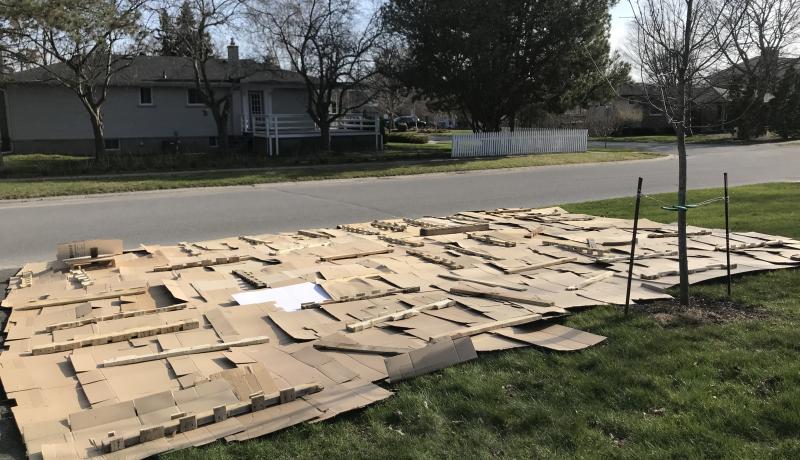
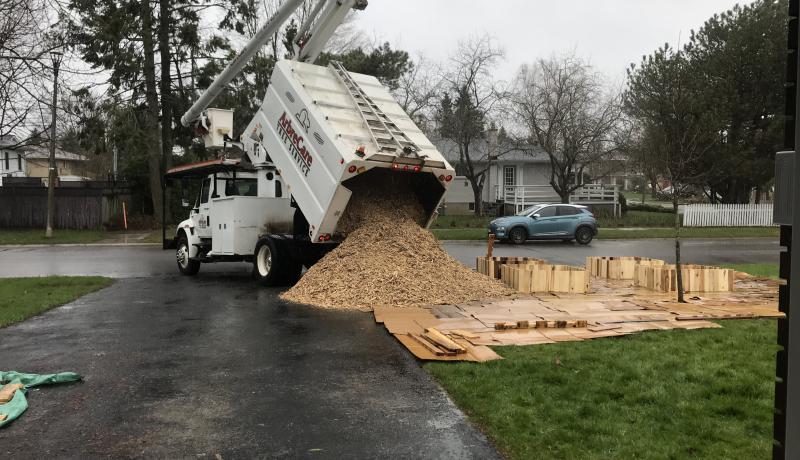
Something to hold down the cardboard was necessary, and scrap pieces from used pallets did the trick temporarily until the wood chips arrived and could replace them permanently.
Truth be told, until the wood chips arrived the cardboard and pallet lawn was not exactly a paradise, and Jess and Thomas received some dubious looks from neighbours and passerby. Someone even took it upon themselves to call the City bylaw department. When the bylaw officers came for a visit, however, they could only state their excitement for the project and that Jess and Thomas had done no wrong. Besides, Jess and Thomas knew in their hearts that the entire neighbourhood will be pleasantly surprised once their project is complete.
As wood chips replaced the pallets over top of the cardboard, things began to look much nicer, and Jess and Thomas could focus their efforts elsewhere as the grass slowly perishes to enrich the soil.
Phase 6 - Building Raised Beds
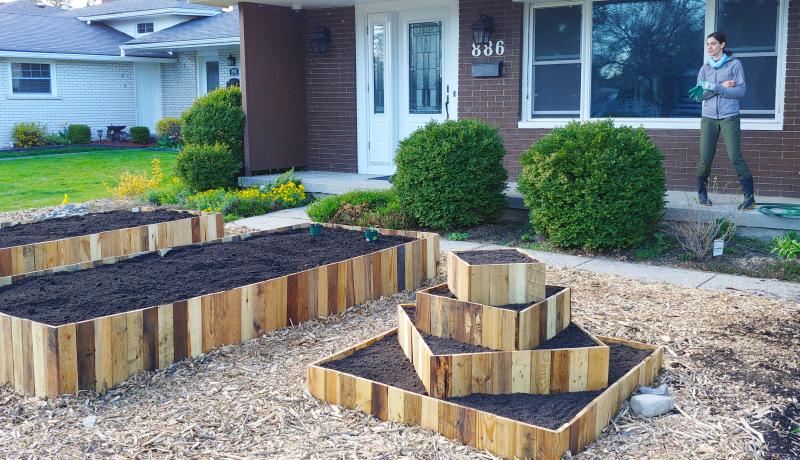
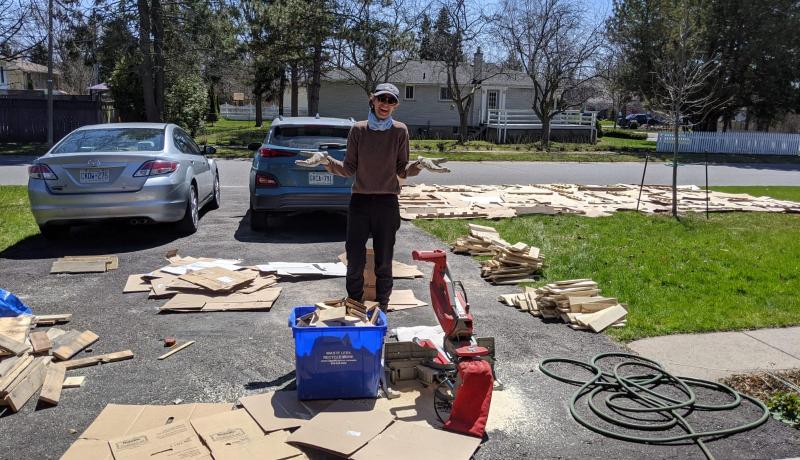
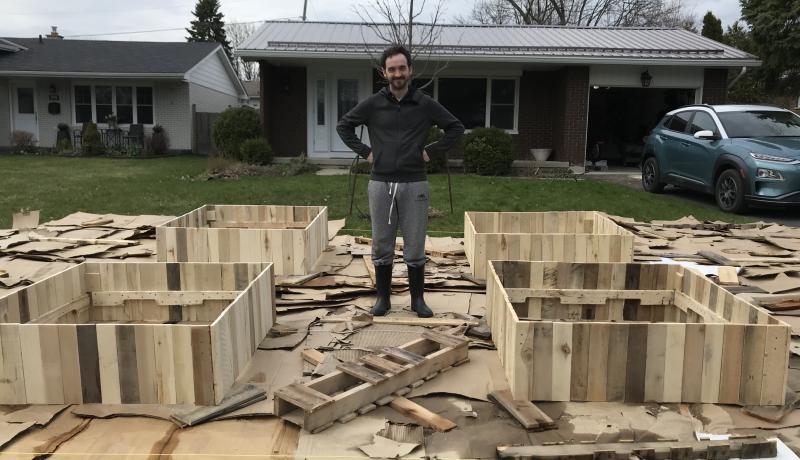
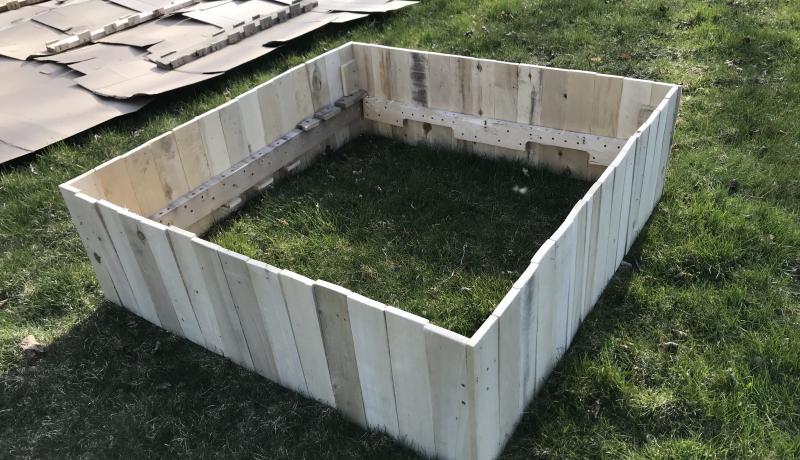
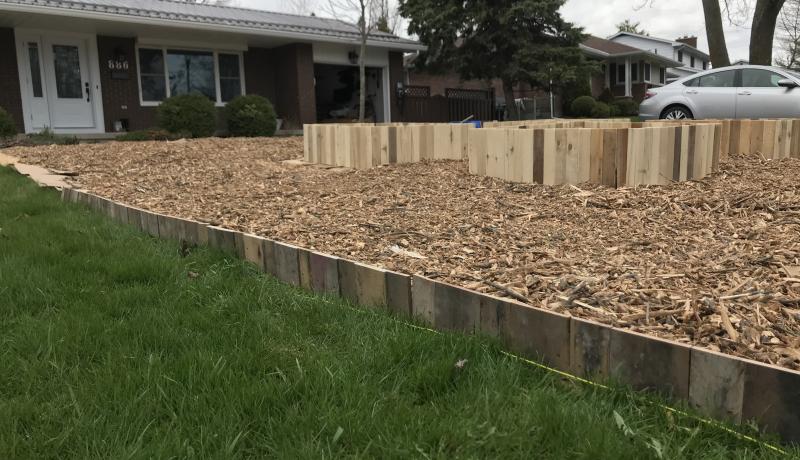
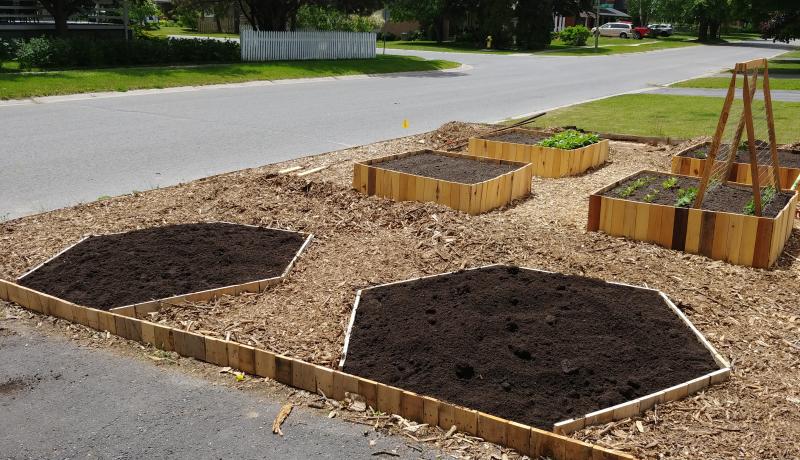
Jess and Thomas built a number of raised beds out of pallet wood to house the vegetable gardens. Four 4x4' and two 4x10' beds would offer ample space for a bountiful yard-to-table vegetable garden, and 4 honey-comb inspired shallow beds would become the home of a wide array of perennial pollinator plants. Their seemingly endless supply of discarded pallets allowed them to build the vegetable raised beds 15 inches tall which would enable them to grow vegetables with large root systems even before the grass below decomposes and the existing soil becomes rich and less dense. A tiered herb garden bed makes for a lovely functional feature.
With some spare pallet wood, a border was added around the garden's perimeter to keep the wood chips in place and add add some visual appeal.
Jess and Thomas painstakingly coated all of the raised beds and border fences with linseed oil which is a great natural way to ensure the structures in their garden last a long time.
Phase 7 - Filling the Beds
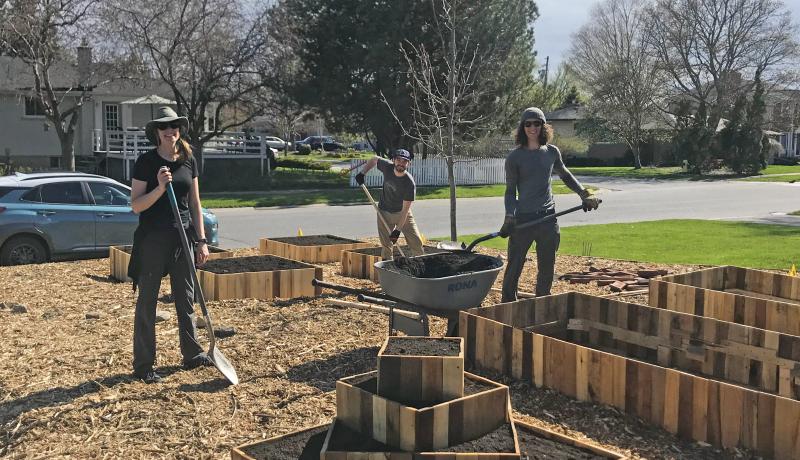
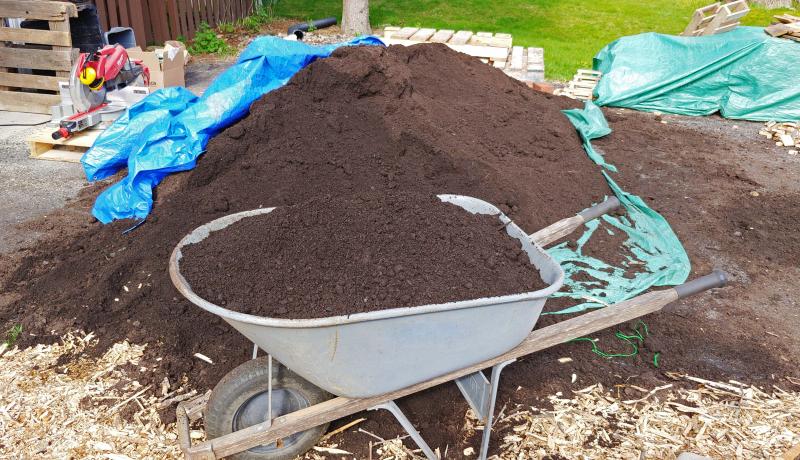
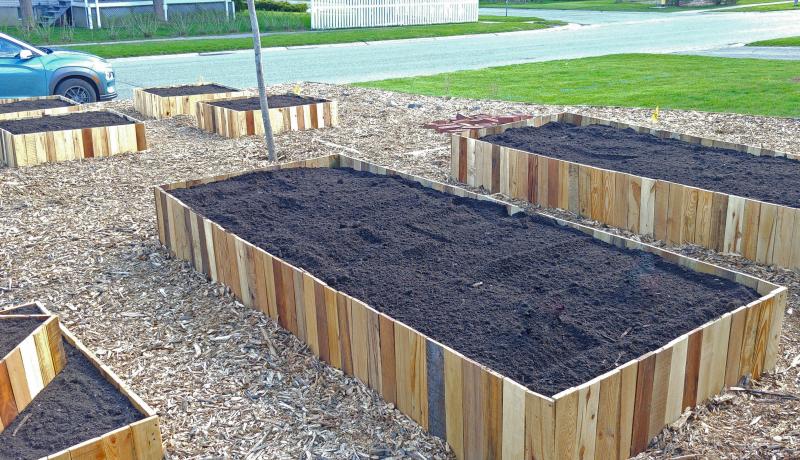
A hefty load of soil arrived early on the Victoria Day long weekend - 9 cubic yards worth! The better part of a day was spent shuttling soil from the large pile in the driveway to each of the raised beds. While quite a margin was built into the amount of soil ordered, it turned out it was just enough to fill all of the beds.
Phase 8 - Planting
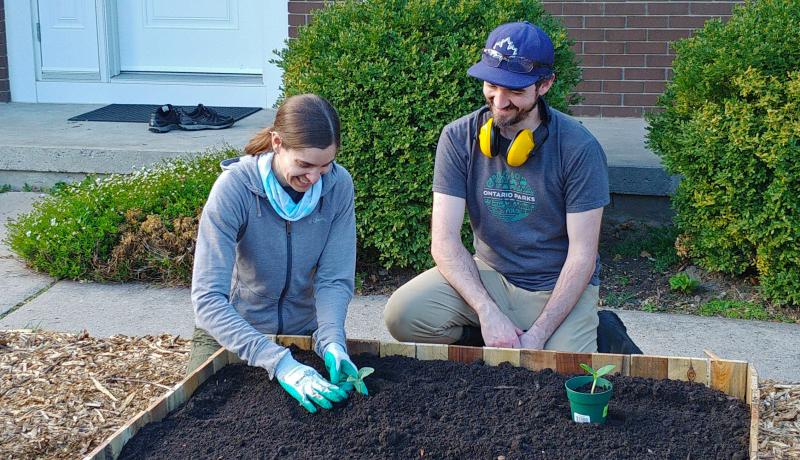
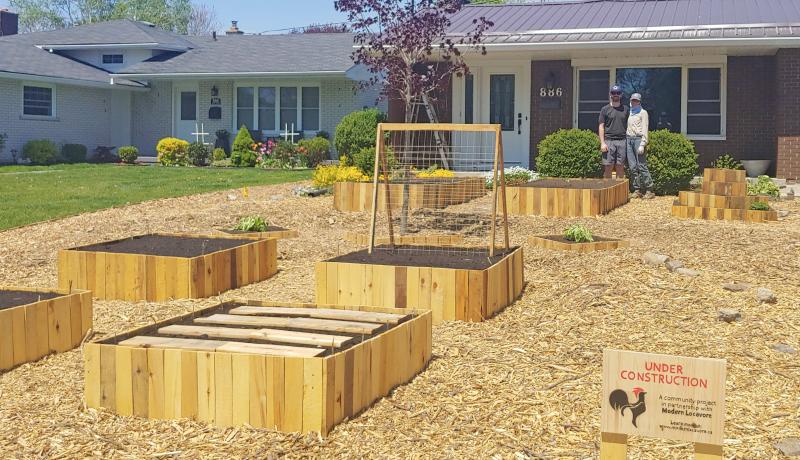
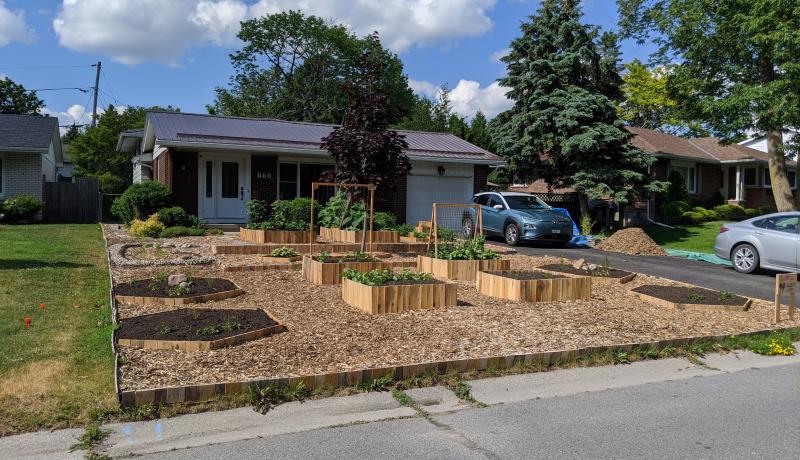
Over the course of a couple of weeks, seeds were sewn and seedlings were planted. Some of the vegetables include: tomatoes, peppers, squash, zucchini, greens, kale, beans, peas, carrots, green onions, raddish, and more! Plus, the herb garden contained healthy supplies of lemon balm, mint, chives, as well as many others.
Once the pollinators arrived, they were promptly planted, tallest towards the house-side of the garden, and shortest towards the road-side of the garden. These pollinators are starting small, but over the following years will grow lush and large to fill the spaces they are in with beautiful greenery and flowers.
Phase 9 - Tend, Enjoy, and Share
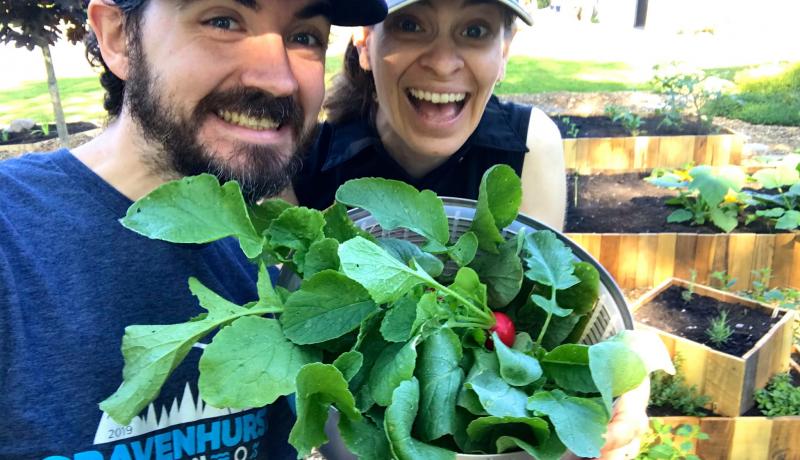
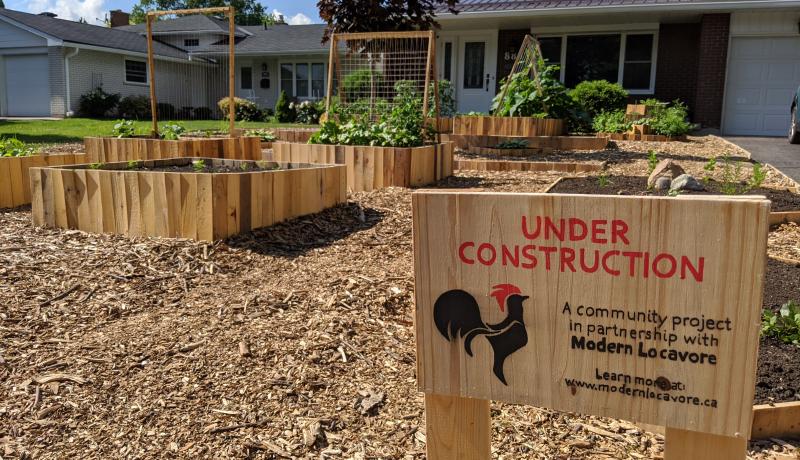
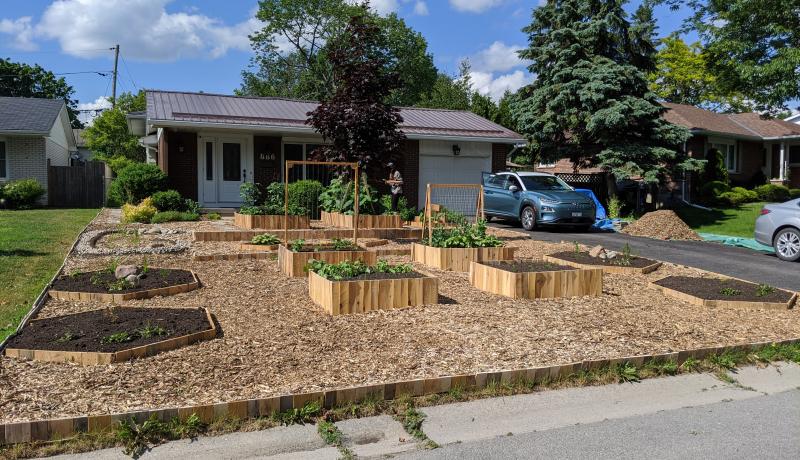
Now that the garden is in place, it's time for Jess and Thomas to spend time enjoying it and share the harvest.
Will the garden evolve over time? We can only guess that it will, but for now all it requires is some watering and planting of new vegetables when others are harvested.
In early July, Jess and Thomas were proudly able to make their first produce donation to the Loving Spoonful and plan on continuing to do so throughout the growing season.

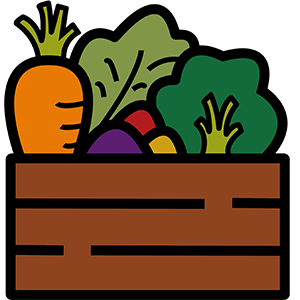

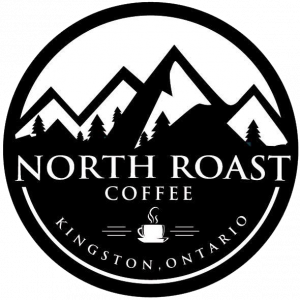
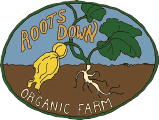
Please log in or register to leave a comment.